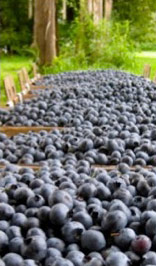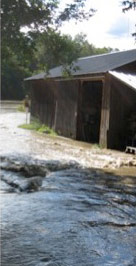Abstract
Urban agriculture has gained currency as part of the solution to various urban problems. Advocates see farming as a way to reuse vacant land in deindustrializing cities, a source of fresh food in urban “food deserts,” and a sustainable entrepreneurial opportunity. Philadelphia has seen a number of agricultural enterprises of various scales and models emerge in its neighborhoods, including community gardens and community-supported agriculture. The city suffers from a large amount of land vacancy, due not only to disinvestment but also to land use that has been poorly adapted to underlying ecology. Development in the buried floodplain of the ensewered Mill Creek has led to building collapses and condemnations. With its vibrant agricultural scene and empty land, Philadelphia offers the potential for a significant farming economy that can generate local wealth while using land that may otherwise lie vacant.
The Intervale Center of Burlington, Vermont offers an example of farming that serves both as an ecological adaptation and an engine for developing the local food economy. Since the mid-1980s, the community-driven nonprofit has transformed a floodplain within the city limits from a neglected and abused dumping ground into a valued resource for growers and consumers. Over the years, the Intervale Center has been both a physical site for farming and composting and a place for research and advice for area growers. Today, the Center leases land to eleven small, organic farms enrolled in an incubator program for farmers who hope to one day own their own farms. The Intervale also provides assistance in business planning, research, and market development.
My project examines the Intervale Center as a case study to address several questions relevant to farming in Philadelphia. What are the components of a strong farm business incubation program? Can the Intervale Center’s model of floodplain agriculture be adapted to the Mill Creek’s buried floodplain in a more urbanized setting? Could its model of land tenure, with a nonprofit owning land that farmers lease, be adapted to scattered sites in a dense urban setting such as Philadelphia? Through these questions, I examine how agriculture can function as both an urban ecological adaptation and a viable generator of business opportunities.



